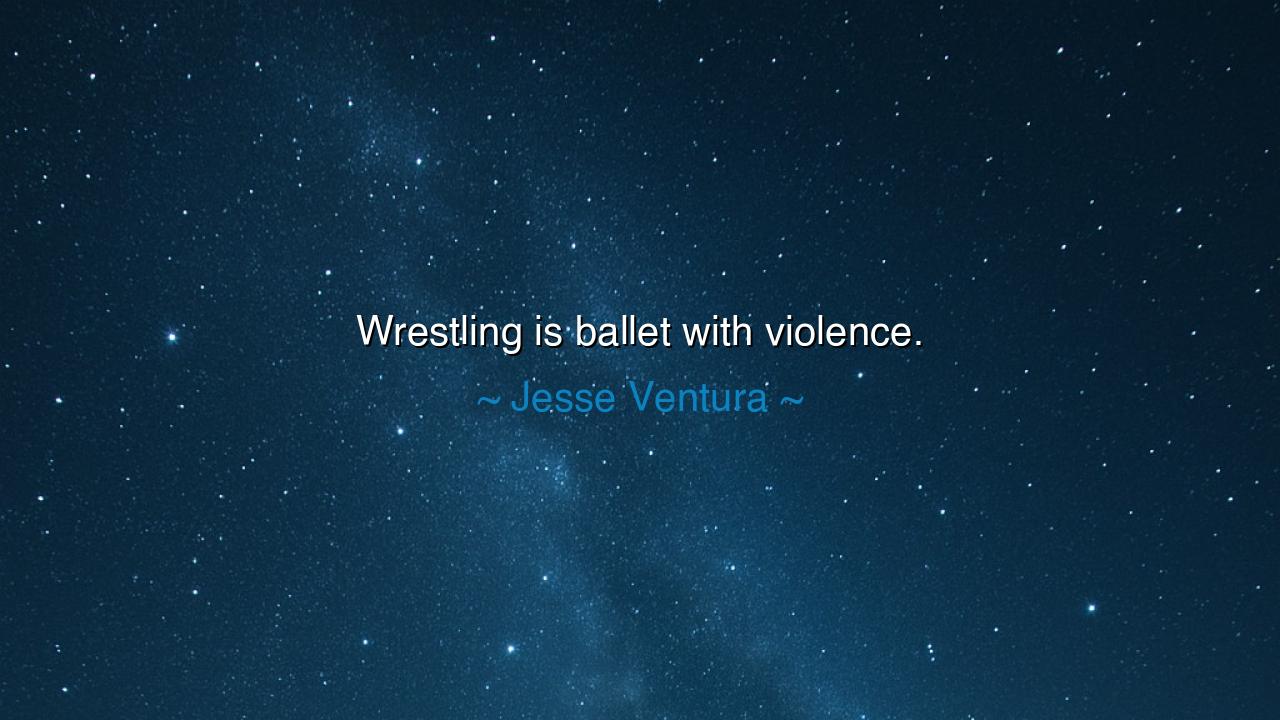
Wrestling is ballet with violence.






Jesse Ventura, a man who strode across the stage of wrestling, politics, and public life, once declared: “Wrestling is ballet with violence.” At first, the words may sound like jest, a paradox meant to shock. Yet within them lies a piercing truth about the nature of wrestling, performance, and even life itself. For Ventura reveals to us that behind the spectacle of power, there is rhythm; behind the clash of bodies, there is choreography; behind the roar of violence, there is art.
The heart of this saying lies in the union of discipline and brutality. Ballet, the most delicate of arts, is born of grace, poise, and years of painstaking repetition. Wrestling, though clothed in aggression, is also a dance: each move calculated, each gesture designed to capture the eye of the audience. To compare the two is to strip away their differences and to reveal their shared soul. Both demand strength, timing, balance, and control. But where ballet cloaks itself in elegance, wrestling veils its artistry beneath the guise of conflict.
History itself affirms this union of art and violence. In the arenas of ancient Rome, gladiators fought not only to survive but to entertain. Their movements were not mere chaos; they were choreographed, measured, meant to tell a story to the crowd. Likewise, in the Greek Olympics, wrestling was considered both a test of skill and a display of beauty, for the body in motion was revered as art in itself. Ventura’s quote echoes this lineage, reminding us that wrestling—though it appears to be war—is in truth also theater, as structured and expressive as a ballet upon the stage.
Consider also the personal discipline of the wrestler. To fling the body, to endure blows, to execute maneuvers with precision—this requires not only strength but the control of a dancer. Just as the ballerina trains for years to achieve a leap that appears effortless, so too does the wrestler train to deliver moves that appear spontaneous yet are carefully crafted. What the audience sees is spectacle, but behind it lies artistry, sacrifice, and devotion to craft. Ventura, having lived in this world, speaks with authority: the beauty of wrestling is that it disguises art as war.
And yet, his words also challenge us to see beyond appearances in all things. How often does life present itself as violence—conflict, struggle, hardship—when beneath it there is hidden rhythm and design? How often do we endure battles without realizing they are shaping us into something graceful, like the dancer shaped by pain? Ventura’s paradox reminds us that violence and art are not always opposites—they can be mirrors of one another, each demanding discipline, each revealing truth.
The lesson, then, is clear: respect the hidden artistry in what at first appears crude. Do not dismiss wrestling as mere brutality, nor any struggle in life as mere chaos. Look deeper, and you will see the choreography, the rhythm, the discipline that transforms conflict into beauty. For just as the wrestler dances through violence, so too can we find balance and meaning even amid the hardest struggles of existence.
So I say to you: remember Ventura’s words—wrestling is ballet with violence. See in them not only a description of sport but a parable of life. In every struggle, seek the rhythm; in every conflict, find the artistry; in every hardship, discover the hidden grace. For the greatest of victories are not only fought—they are performed with the balance, the courage, and the artistry of one who knows that even violence, when mastered, can become a kind of dance.






AAdministratorAdministrator
Welcome, honored guests. Please leave a comment, we will respond soon